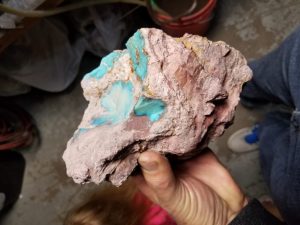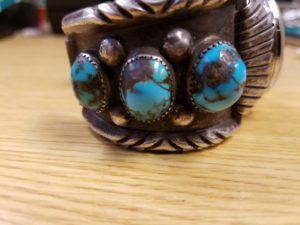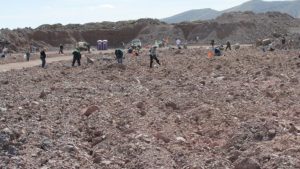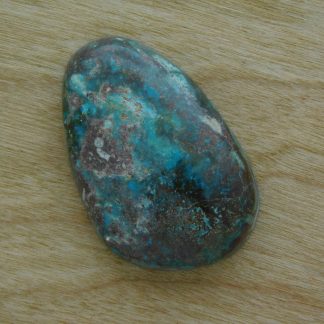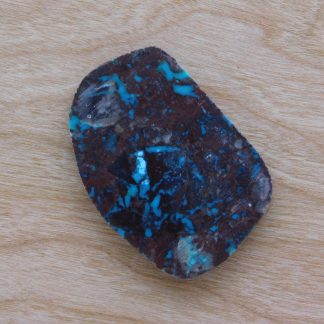
First of all, we are the home of real Bisbee Turquoise. Consequently, we are less than 100 miles from the famous Bisbee Lavender pit mine. Above all, you are assure of receiving genuine Bisbee Turquoise when you purchase it from us!
How do we know it is real?
First of all, it has a very distinct host rock. Consequently, the material which surrounds the precious blue color, is a red brown to lavender color. Besides, it is a conglomerate rock, as in the pictures below.
Additionally, we have had the honor to visit the real Bisbee Turquoise tailing fields numerous times over the last decade at the invitation of Freeport McMoran. Also, we walk and search the tailing piles for this rare and precious variety of turquoise. Moreover, it is rare, it is very hard to find!!! Below are photographs from our numerous adventures of the property. The tailing fields are usually dusty, so we bring water bottles to wet small areas at a time to bring out any blue color. Additional pictures and information is on our ⇒ Bisbee Tailing Fields page!
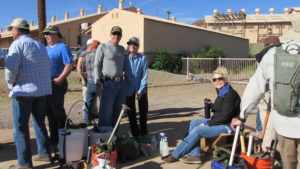
Secondly, we routinely cut and cab real Bisbee turquoise rough. Coupled with the value of this scarce variety of turquoise, you must be very careful to “read the rock” to maximize the yield. Also, it is interesting to note that when you cut or cab this variety of turquoise, the water used to cool the cutting blade or sanding wheels turns red from the host rock.
